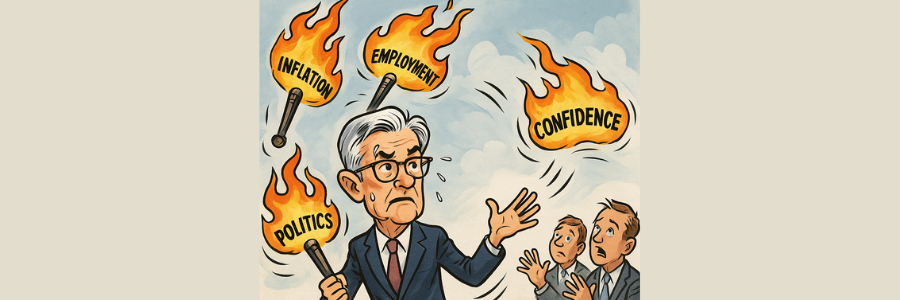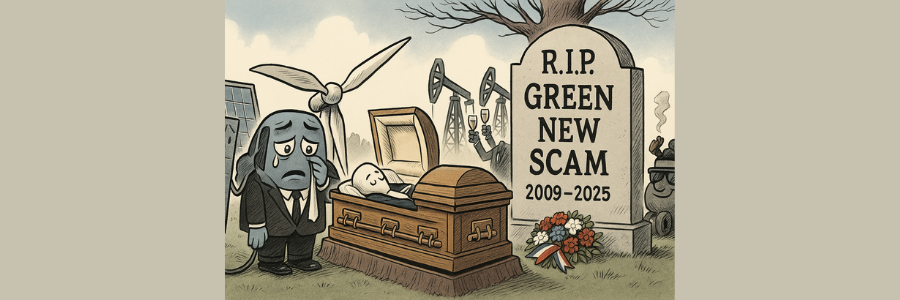
Posted August 14, 2025
By Sean Ring
Wall Street’s Favorite Magic Trick
If you haven’t read my friend and colleague Dave Gonigam’s Five Bullets from Tuesday, I highly recommend you do so. In a piece titled “Good for Wall Street, Bad for Main Street,” Dave shreds the notion of stock buybacks.
He writes:
Now let’s step back from the headline news and talk about what a company can do when it’s sitting on a boatload of cash.
Basically, the company has five choices…
- Raise the dividend: That is, pay a higher percentage of the profits to shareholders every quarter. Or institute a dividend that didn’t exist before
- Share buybacks: See above. Buybacks have the effect of shrinking the overall share count; thus, every shareholder winds up owning a slightly bigger chunk of the company
- Mergers and acquisitions: Self-explanatory
- Capital expenditures, or capex: Build new factories, buy new equipment
- Research and development: Also self-explanatory.
The last two of those choices are all about growing the business for the future and bringing new wealth into existence.
The first two — and to a lesser extent, the middle one — do not create new wealth.
They’re what a company does when management looks around for ways to invest in the future of their businesses — and doesn’t see anything worthwhile.
That’s all true.
But I’d quibble with a few points. The first is that while mergers and acquisitions don’t create much wealth, they usually destroy a lot of wealth.
Second, paying a higher dividend theoretically moves a bigger capital gain into cash in the shareholders’ hands. That’s not a bad thing. In fact, the shareholder can buy new shares in the same company with that higher dividend. So, absent transaction costs, the shareholders’ overall wealth doesn’t change.
Finally, concerning buybacks: as the price of a share is theoretically the present value of expected future cash flows - that is, every future dividend discounted back to the present - paying shareholders for their shares is paying all expected future dividends, discounted to the present, immediately. Again, that’s not a bad thing necessarily.
But we’ve always been of two minds about buybacks. In fact, buybacks weren’t widespread until, as the kids nowadays say, “the late 1900s.”
They were effectively “legalized” in the United States in 1982, when the Securities and Exchange Commission (SEC) implemented Rule 10b-18 of the Securities Exchange Act.
Before this, buybacks were widely regarded as a form of stock market manipulation and were rarely conducted, because companies would’ve risked regulatory scrutiny.
Rule 10b-18 provided a legal safe harbor, clarifying the process and conditions under which firms could repurchase their shares without being accused of manipulation, paving the way for widespread corporate buyback programs after 1982.
But they’re looked upon with a side eye. We’ve all heard the story before…
A company reports lackluster growth, maybe even a stagnant business, yet—poof!—the stock price goes up anyway. But how?
Welcome to the world of stock buybacks—corporate America’s favorite way to look richer without actually being richer.
What’s a Buyback, Anyway?
First, the basics.
In its simplest form, a stock buyback is when a company uses its cash to buy back shares from the market. This reduces the number of shares outstanding, which mathematically boosts earnings per share (EPS). That makes a company’s financial metrics look better without selling a single extra widget or writing a single extra line of code.
It’s corporate cosmetic surgery. And like any cosmetic surgery, the results are stunning—or Jocelyn Wildenstein—depending on the skill and timing.
Why Wall Street Loves Them
Instant EPS Pump
Earnings per share (EPS) is a simple fraction—net income minus preferred dividends divided by the number of shares. When the denominator shrinks because the company buys back shares, the EPS automatically rises. No new products. No additional revenue. Only a smaller share count.
The Con Game
When a company announces a buyback, it’s essentially telling the market, “We think our shares are undervalued.” That signal alone can goose the stock price, because if the insiders are willing to put serious cash on the table, investors assume they must know something the rest of the market doesn’t. Whether that confidence is justified is another matter entirely. Funnily enough, most executives mistime buybacks, overpaying for shares. More on that later.
“No Strings Attached”
Dividends are like a marriage vow—once you start, cutting them is a sign of trouble that markets punish severely. Buybacks, on the other hand, are more like casual dating. A company can ramp them up in fat years and quietly shelve them when times get lean, without triggering the same kind of investor panic. This flexibility makes them irresistible to CFOs managing unpredictable cash flows.
Jackpot!
For executives whose compensation packages are loaded with stock options, buybacks are like a performance bonus in disguise. Reducing the share count inflates the value of those options without requiring actual business improvement. It’s not hard to see why buybacks are so popular in boardrooms—everyone at the top walks away richer.
Why Critics Hate Them
First, critics rightly argue that every dollar spent on buying back stock is a dollar not spent on long-term growth. That cash could be used to fund research and development, expand the business, or increase employee wages. Instead, it’s often redirected to financial engineering that benefits shareholders now, but leaves the company worse off in the future. Think Boeing.
But you can say much of that about dividends, too. If you ask me, MSFT and AAPL only started paying dividends when they ran out of ideas.
Second, a buyback only creates value if the company buys its shares cheaply. Unfortunately, corporate history is full of examples where management paid peak valuations for their stock—just before the price tanked. In those cases, buybacks are less a wise investment and more a spectacular way to light shareholder money on fire.
Next, the big winners from buybacks tend to be institutional investors and large shareholders who can offload big blocks of stock into the company’s open wallet. Smaller investors who don’t sell see little direct benefit, and any short-term price gain may fade before they can act. Critics say it’s another way the system tilts toward the already wealthy.
Finally, when a company buys back its stock, it creates the illusion of growth where none exists. Rising EPS makes the business look healthier than it is, masking stagnant revenues or declining market share. For investors who rely on surface-level metrics, that distortion leads to some costly mistakes.
The Ugly Truth About Timing
As we mentioned before, one of the best contrarian indicators that a stock might be overpriced is when management announces a massive buyback.
The reason? Executives, like the rest of us, are prone to overconfidence. They tend to authorize big repurchases when times are good and share prices are high—precisely the wrong moment to be loading up. When the market turns, the buyback shares look expensive, and the cash is gone.
So, Are Buybacks Good or Bad?
That depends entirely on context. When a healthy company with consistent earnings repurchases stock at reasonable prices, it’s a great way to return value to shareholders. For long-term holders, the shrinking share count compounds gains over years. But when buybacks are used as a quick fix to goose financial ratios—or worse, as a stealth enrichment scheme for executives—the long-term damage outweighs the short-term pop.
Wrap Up
Stock buybacks are neither inherently angelic nor demonic—they’re a tool. In the right hands, at the right price, they’re a disciplined way to reward investors. In the wrong hands, they’re corporate theater: flashy, expensive, and ultimately hollow.
If you want to know whether a buyback is good news or bad, don’t just read the headline. Look under the hood. Is the company genuinely growing, or is it just slicing the same stale pie into fewer pieces? Because on Wall Street, the magic trick is always in the presentation—and the disappearing act is usually your money.

The Joyless Bull
Posted November 03, 2025
By Sean Ring

Go Big. Go Homer.
Posted October 31, 2025
By Sean Ring

Powell Cuts, Then Waffles
Posted October 30, 2025
By Sean Ring

Bill’s New Boogeyman
Posted October 29, 2025
By Sean Ring

The End of the Green New Scam?
Posted October 28, 2025
By Sean Ring

